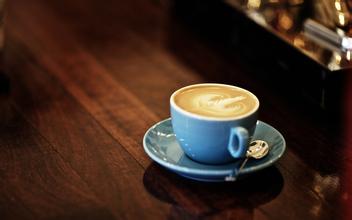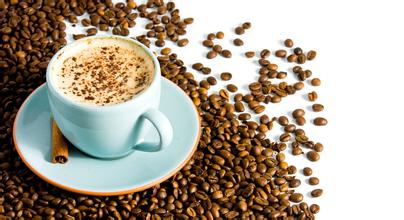Introduction to the varieties of Brazilian Coffee grown by Flavor description and Taste treatment
Introduction to the varieties of Brazilian Coffee grown by Flavor description and Taste treatment
Brewing: to brew a good cup of coffee, you should not only have fresh coffee powder and slightly harder water, but also a set of easy-to-use brewing tools. There are three main types of coffee machines in common use.
Drip filter: wet the coffee powder with water and let the coffee liquid flow through the filter cloth or filter paper and flow into the container at the speed of natural fall. Basically, this method does not soak the coffee powder, just let the hot water pass slowly through the coffee powder. Both the drip cup and the electric coffee maker fall into this category and are the simplest brewing tools that can make clean and brightly colored coffee.
Bubble type: put the coffee powder into the pot, soak it in hot water for several minutes, and then filter out the coffee grounds by a filter cloth or screen to form a cup of coffee liquid.
Siphon pots, drip pots, Belgian coffee pots and Vietnamese coffee pots are all follicular brewing tools, and they all have a soaking process to form a more complex taste.
High-pressure type: use pressurized hot water to penetrate the compacted coffee powder to produce a thick cup of coffee in this form of tools such as a mocha pot and an espresso machine.
Quick brewing method: can use Italian espresso machine, faster coffee brewing method. The Italian espresso machine can extract several cups of coffee successively. The oil and gum in the coffee beans can be emulsified and dissolved under high pressure during the brewing process, and the essence of the beans is completely extracted by pressure, making the brewed coffee stronger, better in taste and flavor.
The great economic crisis that broke out in 1929 sharply reduced the world consumption of coffee, which dealt a heavy blow to the Brazilian coffee plantation economy. Since then, the proportion of Brazilian coffee production in export earnings has plummeted. In the past 30 years, with the rise and development of Brazilian modern industry, especially steel, shipbuilding, automobile, aircraft manufacturing and other industries, the status of coffee in the national economy has declined year by year, but it is still one of the pillars of Brazil's economy. Brazil is still the world's largest coffee producer and exporter. Brazil makes full use of the tropical geographical environment and attaches importance to the production and sale of coffee, so that the output, export volume and per capita consumption of coffee have been ranked first in the world for many years, and have been known as the "kingdom of coffee". Coffee was introduced into Brazil after the 18th century. In 1727, coffee was introduced into Port Belem, Brazil from Guyana. Since then, it has settled in Antuku, Brazil, mainly in the southeast coastal areas of Brazil. Namely, Sao Paulo, Parana, San Esprito, Minas Gerais and other four states. From the end of the 18th century to the 1920s, during the heyday of Brazilian coffee production, Brazil accounted for 75% of the world's total coffee production. Over a long period of time, coffee accounted for 2% of Brazil's total export revenue, making Brazil a well-deserved "coffee kingdom".

Important Notice :
前街咖啡 FrontStreet Coffee has moved to new addredd:
FrontStreet Coffee Address: 315,Donghua East Road,GuangZhou
Tel:020 38364473
- Prev

Flavor description of Panamanian washed Kaduai Coffee beans introduction to the production area of Grinding scale varieties
Panamanian washed Kaduai Coffee beans Flavor description Grinding scale Coffee beans are of good quality, rich and unique flavor, sweet in acid and moderate bitterness, which is very suitable for single drink or mixture. Both Colombian beans and Brazilian beans are the best choice for basic beans of blended coffee, but they have a sweeter flavor and stronger aroma than Brazilian beans, except for individual products.
- Next

Colombia Emerald Estate Coffee Bean Flavor Description Grind Scale Variety Introduction
Colombia Emerald Estate Flavor Description Grind Scale Variety Introduction Hope Estate has a total of four estates (Esperanza, Las Margaritas, Cerro Azul and Potosi). The estate has won Best of Panama (2008) and Second (2009)*. 2012 SCAA Coffee of the Year
Related
- Detailed explanation of Jadeite planting Land in Panamanian Jadeite Manor introduction to the grading system of Jadeite competitive bidding, Red bid, Green bid and Rose Summer
- Story of Coffee planting in Brenka region of Costa Rica Stonehenge Manor anaerobic heavy honey treatment of flavor mouth
- What's on the barrel of Blue Mountain Coffee beans?
- Can American coffee also pull flowers? How to use hot American style to pull out a good-looking pattern?
- Can you make a cold extract with coffee beans? What is the right proportion for cold-extracted coffee formula?
- Indonesian PWN Gold Mandrine Coffee Origin Features Flavor How to Chong? Mandolin coffee is American.
- A brief introduction to the flavor characteristics of Brazilian yellow bourbon coffee beans
- What is the effect of different water quality on the flavor of cold-extracted coffee? What kind of water is best for brewing coffee?
- Why do you think of Rose Summer whenever you mention Panamanian coffee?
- Introduction to the characteristics of authentic blue mountain coffee bean producing areas? What is the CIB Coffee Authority in Jamaica?

